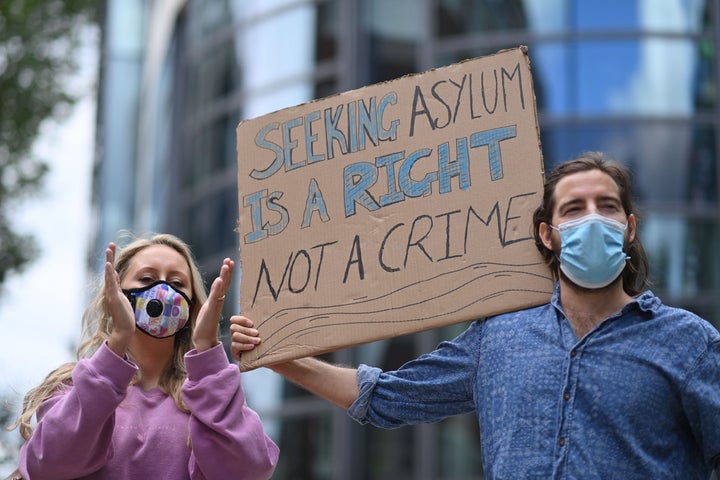
Last week, the body of a young person from Sudan, named Abdulfatah Hamdallah, washed up on a Sangatte beach in the middle of the night after he drowned while trying to reach safety in the UK.
Priti Patel blamed “criminal gangs,” but this devastating and wholly expected death lies firmly at her door. She has been repeatedly warned that it was only a matter of time before her toxic policy to deny safe and legal routes to the UK would cost lives.
In a week of abject failures for the government, children and young people seem to be paying the price for ministers’ mistakes. As the exams fiasco continues to deepen, the Home Office’s struggling scheme for protecting unaccompanied children seeking asylum in the UK finally crumbled after years of ignored warnings.
In response, the Home Office announced that it will be holding unaccompanied asylum seeking children in immigration “processing centres” instead. Make no mistake, this is child detention by any other name, and it must be stopped.
Our government used to lock up thousands of children in immigration detention centres across the UK until it was banned by the coalition government. In 2014, legislation was passed to limit how long an unaccompanied child could be detained to a maximum of 24 hours. In reality, though, the poor safeguards that permeate our entire immigration detention system have led to cases of children being held for longer.
The National Transfer Scheme is not, as its name would suggest, a system for moving cargo around the country, but the scheme set up for protecting and housing unaccompanied children following the detention ban. The aim was to ensure that children are safe and that councils share responsibility so those at ports of entry are not left with all the responsibility. But the scheme has been a disaster, and last week it collapsed.
Last Monday, Kent County Council asserted that it had reached capacity in its ability to accommodate and safeguard unaccompanied asylum seeking children.
Priti Patel’s Home Office claimed immunity due to the “unprecedented situation” of recent Channel crossings. But the truth is that this is the result of an ill conceived and badly delivered system, and years of unheeded warnings.
Since 2016, just 960 unaccompanied children entering the UK have been through the system designed specifically for this situation. In June of last year, London councils called it a “broken system” and warned that unaccompanied asylum seeking children were in danger of not receiving the care they need due to a breakdown in government plans to support them.
A UNHCR report, also of last year, documented a “lack of planning and assessment built into the NTS” and detailed a case study of two vulnerable teens who were removed from the care of their foster mother under the dysfunctional NTS, only to be locked away in a house. “They just dropped kebabs for them, and closed the door,” she told the UNHCR. “They left them there like animals.”
The centres where it is now proposed that children are held in the care of officers, who are neither qualified or equipped to do so, are known as “Short Term Holding Facilities”. They are the darker, harsher, less regulated and more secretive corner of our immigration detention system.
This year, Her Majesty’s Inspector of Prisons was able to inspect these facilities for the first time in many years. It found no access to legal advice in any centres, no management oversight of length of detention, and poor physical conditions. The report notes that, “[n]one of the rooms were suitable for overnight stays.”
On the question of children already held in these places, the inspection reported that “[t]here was inadequate oversight of detention practices for children,” and that there was no accurate data on how long children were being detained. It also detailed incidents of children being held for long periods of time and regularly handcuffed. In some cases, unaccompanied children were not even permitted to leave ships on which they were found, were not interviewed with a responsible adult present, and did not have access to legal advice or a telephone call.
These are the places in which Priti Patel’s Home Office wants to keep some of the world’s most vulnerable children. Not on our watch.
Matthew Leidecker is campaigns manager at Detention Action.
